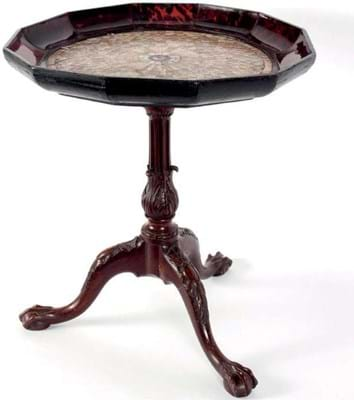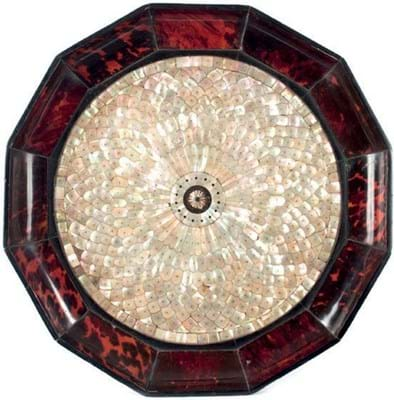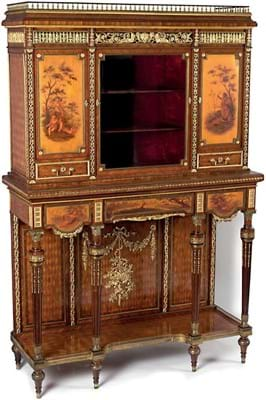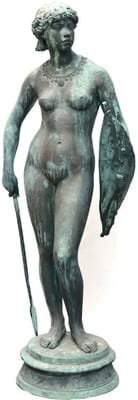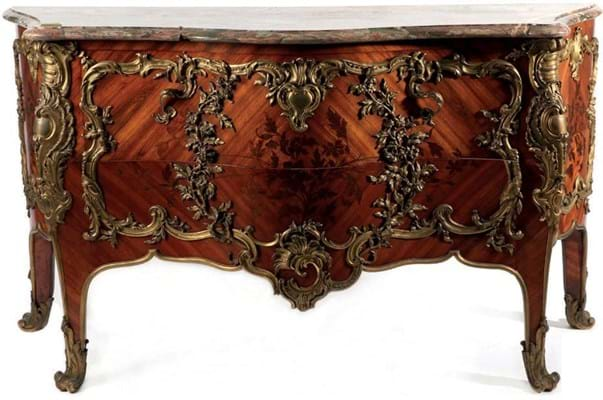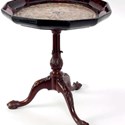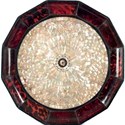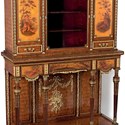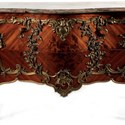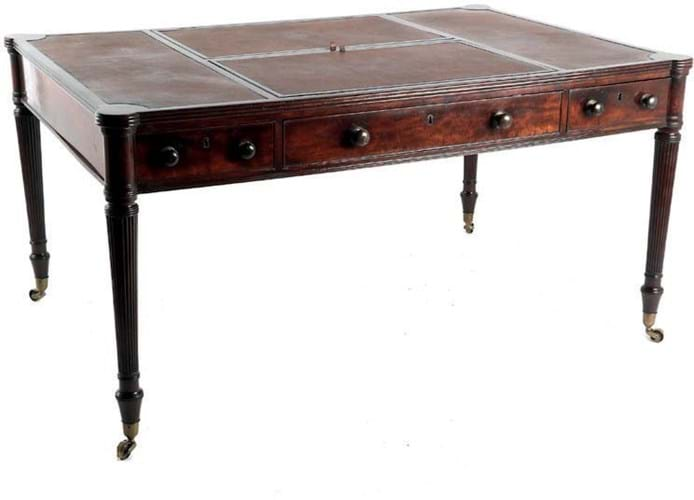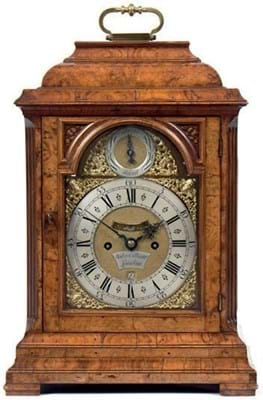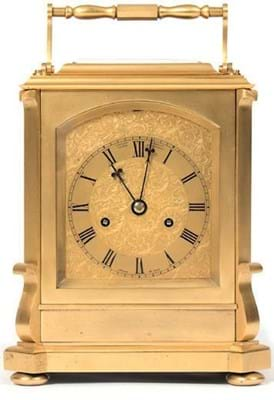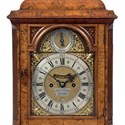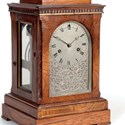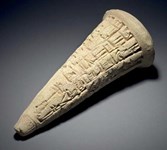Those who can remember the long hot summer of 1976 will recall how, back then, most major auctioneers shut up shop for the duration.
The obsessions of futurologists at the time were twofold: the imminent onset of an ice age or how we were going to fill all our leisure time in the sun-kissed 21st century.
As it is, in 2018 the UK antiques trade has seldom been busier than at two mid-heatwave sales in the Dales and the Cotswolds where, against current trends, they saw off private buyer rivals to take nearly all the top lots.
Tennants (20% buyer’s premium) mounted an 850-lot Fine Art Summer sale up in North Yorkshire on July 21 which enjoyed an 86% success rate and a hammer total of just over £1m.
Down in Prinknash Abbey on July 24-25, Chorley’s (20% buyer’s premium) offered more than 1000 varied lots in the old-fashioned way billed as a ‘country house’ sale. It notched up just short of £480,000 from the 83% which sold.
Garden statues
Fittingly, the stars at Tennants’ Leyburn rooms was a trio of garden statuary groups provenanced to the Wiltshire estate Hamptworth Lodge. All three left conservative estimates behind in going to British dealers.
First up was a rare set of lead figures of four seasons modelled by Walter Gilbert, who established the Bromsgrove Guild of Applied Arts (1889-1966).
All were in weathered condition and, apart from the 3ft 6in (1.08m) tall figure of Winter which bore the moulded Bromsgrove Grove mark, had minor damage. Against a £4000- 6000 estimate, the group sold at £25,000.
Top of the trio was a 5ft 8in (1.74m) tall bronze Nubian Girl, signed and dated Emile Louis Truffot 1883. Possibly representing Africa from a set of the Continents, she had some minor faults but made £31,000, five times the mid-esimate. Several works by Truffot (1843-95) have been sold at auction in recent years, including the terracotta bust Young Moorish Girl sold at Sotheby’s 19th & 20th Century Sculpture sale in 2014 for £11,000.
A 4ft 5in (1.34m) tall lead figure of Athena pitched at £700-1000 sold at £15,000.
Furniture vote of confidence
The finer pieces at Chorley’s Gloucestershire rooms were consigned from three private collections. All were bought by UK dealers in the room and among the record 2000 online registered bidders.
“I found that interesting,” said auctioneer Simon Chorley. “When I visited Masterpiece London a number of dealers told me furniture was near impossible to sell. Yet here they were buying strongly.”
Topping the day was a Indo-Portuguese mother-of-pearl and tortoiseshell inlaid tray. Typical of work produced in Gujarat in the 17th and 18th century, it measured 21in (53cm) wide. At some point it had been mounted on its 23in (58cm) tall mahogany tripod stand.
Separating the two elements, plus restoration to splitting and missing elements, will be left to the buyer, the London dealer who won it with a bid of £35,000 (estimate £3000-5000).
Much perfectly good Georgian, Regency and Victorian furniture sold at three-figure sums – and would once have made much more – but there were compensations for pieces with that extra quality or decorative appeal.
For instance, Chorley’s offered a fine Edwardian mahogany astrological table attributed to Edwards & Roberts. The 3ft 4in (1.03m) wide oval top was inlaid in satinwood with astronomical instruments and the signs of the Zodiac and took a mid-estimate £4800.
Similarly, Tennants featured an early 19th century rosewood-crossbanded and boxwood-strung mahogany writing desk catalogued as ‘almost certainly by Gillows’. Featuring a superstructure of shelf and drawers behind metal grille doors, it took a top-estimate £3000.
Upbeat mood
The upbeat mood of the trade was exemplified when two UK specialists went head-to-head at Tennants for an early 19th century mahogany writing table catalogued as ‘manner of Gillows’.
It was well made with a ratchet easel either side of the 5ft x 3ft 4in (1.51 x 1.01m) top. However, in the current market it did not seem unduly underestimated at £1000-1500.
“Most of the trade fell out soon after it reached the top estimate but the two specialists were determined to have it,” said auctioneer Jeremy Pattison after one of them took the table at £15,000.
Also bringing bids of nearly 10 times the estimates from UK and Irish dealers were a George II walnut featherbanded dressing chest with brushing slide at £3800; a late 18th century mahogany serving table at £4800 and a pair of late 19th century carved giltwood jardinière stands in the George II style at £6200.
“We were fortunate in having three private collections in the sale,” added Pattison. “If the quality is high and the lots are fresh on the market, the trade will still buy furniture.”
A private buyer bought the best-selling piece of furniture, however: a late 19th century Louis XV-style tulipwood, purpleheart and gilt-metal mounted commode with a purple Breccia marble top and floral marquetry inlay.
The 5ft 4in (1.62m) wide commode had, at least by repute, been bought at the 1947 Lowther Castle sale. It had a few condition issues – a broken top, losses to the front moulding and some movement of the carcass – but against a £1500-2000 estimate, it sold at £20,000.
Ornate French piece
Exuberant 19th century French pieces in earlier styles have weathered the great furniture taste change better than most and a prime example at Chorley’s was an ormolu-mounted, 4ft (1.22m) wide kingwood cabinet painted with Vernis Martin-type scenes.
While the label to a drawer, G Grimard Paris, was believed to have been added later, the cabinet made £23,000 against an estimate of £6000-8000.
English material at Chorley’s was led by a maplewood-veneered mahogany table designed by Henry Whitaker (fl. 1825-47).
Inlaid to the 6ft (1.83m) diameter octagonal top with a continuous border of shamrocks, thistles and roses symbolising the UK, it was almost certainly part of a suite made for the Conservative and Unionist Club in Piccadilly around the time of its founding in 1844.
Another table from this suite was acquired by the V&A in 1960.
One of the rare private buyer’s successors in the upper price register, the Chorley’s table sold on the lower estimate at £20,000.
English makers with their own following continue to be in demand.
At Chorley’s, two Howard armchairs with original, if seriously distressed, upholstery were both estimated at £1000-1500 and each sold to the UK trade at £4200.
At Tennants, a substantial offering of Robert ‘Mouseman’ Thompson material – all bar one of the 69 pieces sold around estimate – was led by a 6ft 6in (1.97m) tall oak hallstand with mirrored and panelled back and lift-up seat.
An unusual form from the inter-war periods, it went just a shade below expectations at £4900.
Famous clock makers
Clocks at both houses conformed to current trends: longcases failing to make much of an impression but a lot of interest in good smaller pieces by major names.
Horology at Chorley’s was led by a George III eight-day bob and pendulum hour-repeat bracket clock engraved and signed to the backplate John Ellicott London (1706-72).
In a 16in (40cm) burr walnut case with pierced fret and glazed side panels, and having a brass arched dial with gilt metal rococo spandrels, it made a mid-estimate £13,000.
Top names from 19th century horology also guaranteed good responses.
At Tennants, a c.1830, 8in (21cm) tall rosewood striking library clock was signed to the silvered dial and backplate [Benjamin Louis] Vuillamy London. With twin chain fusee movement and anchor escapement, it doubled the estimate, going to the London trade at £11,000.
From 20 years later, an 11in (28.5cm) tall gilt-brass carriage clock was signed to the foliate engraved dial and backplate Charles Frodsham, 115 New Bond Street, London.
With a five-pillar, two-train fusee movement, the quarter-striking clock doubled the lower estimate in selling to the UK trade online at £12,000.


